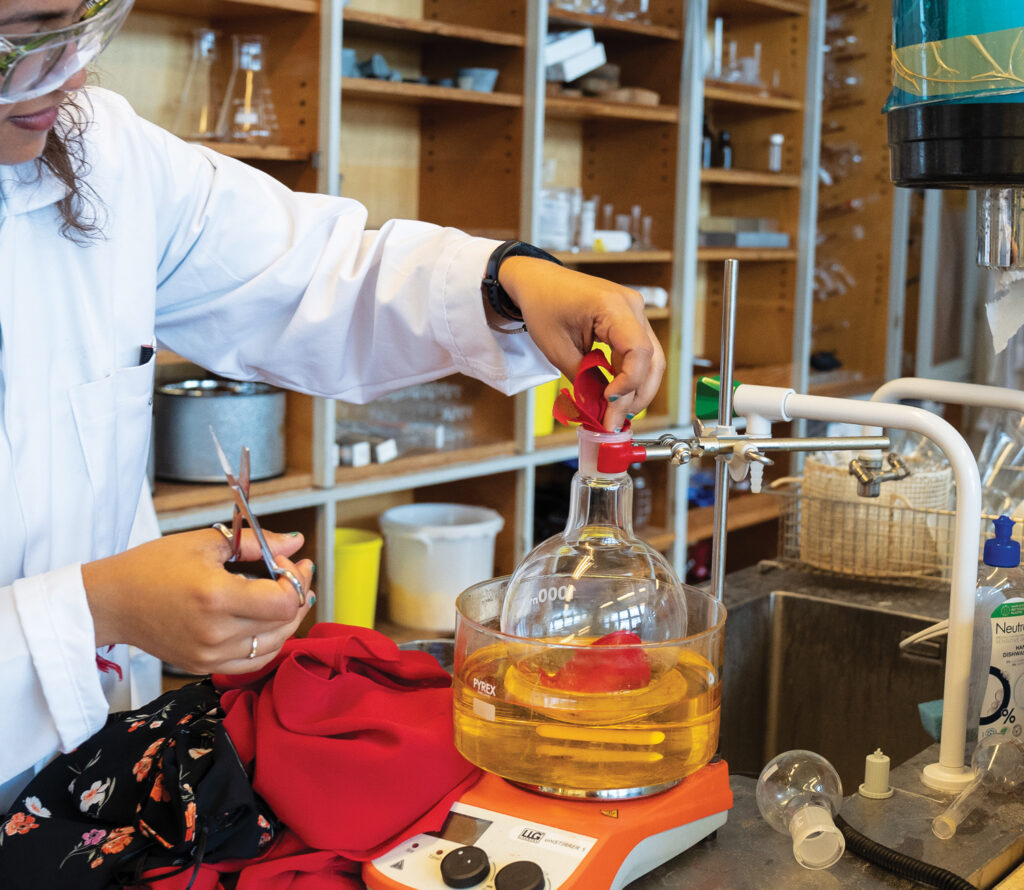
Chemists at the University of Copenhagen in Denmark have learned that an Old World leavening agent used in gingerbread can separate cotton-poly blended fibers. The baking ingredient hartshorn salt, also known as ammonium bicarbonate, is key to the process, plus the nontoxic solvent ethylene glycol and heat.

The hartshorn salt breaks down into ammonia, CO2 and water. The combination of ammonia and CO2 acts as a catalyst, breaking
down the polyester (PET) while preserving the cotton. The materials settle into distinct layers, and the majority of each material can be recovered for reuse.

“At first, we were excited to see it work so well on the PET bottles alone,” says Carlo Di Bernardo, doctoral student and study co-author. “Then, when we discovered that it worked on polyester fabric as well, we were just ecstatic. It was indescribable. That it was so simple to perform was nearly too good to be true.”
“If we throw dirty plastic waste in a container, we still get good quality cotton and plastic monomer out of it,” says Shriaya Sharma, doctoral student and study co-author. “This can even be a plastic bottle with juice residue still in it. We just put it in and begin the reaction. It still works.”

The researchers are in contact with companies to test the cotton-poly recycling method on an industrial scale.
The same group of researchers previously demonstrated that CO2 could serve as a catalyst to break down nylon.
The research was published in the journal ACS Sustainable Chemistry & Engineering in July 2023.
 TEXTILES.ORG
TEXTILES.ORG


